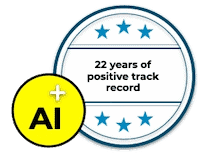However, the Imbalances are Growing Immeasurably
When I read newspaper reports, I am amazed at how some crude ideas take root. For example, we constantly read that the price of gold, which has doubled in the last two years, is clearly a bubble. Gold has increased in value by USD 13 trillion. Since 2000, its value has increased by USD 24 trillion. US debt has risen by USD 33 trillion, and global debt by around USD 70 trillion, since 2000.
For a long time, the world’s currencies were backed by gold due to repeated abuses of fiat money systems in the past. Trust is hard to earn but easy to lose.
Over the past 45 years, gold has struggled to live up to its reputation as a reliable store of value. However, the expansion of debt following the 2008/2009 financial crisis led to a fundamental reassessment of gold’s value this year, albeit with some delay.
For the past 50 years, it had been virtually unthinkable that the US dollar would not be considered a safe haven. However, this was not the case for the first time this spring. In April, stock markets slumped by 20% after Trump imposed tariffs around the world.
From that point on, it was clear that the US was on the defensive and trying to withdraw capital from the rest of the world to avoid a catastrophic fall.
When Fundamental Behaviour Changes Fundamentally, It Is a Signal
The italicised statement is a reasonable assumption. Even though the price of gold rose sharply, the USD weakened significantly in the weeks that followed. Such events do not occur by chance or due to the actions of a small group of speculators – they represent fundamental shifts in risk perception. Most important market participants recognise and evaluate shifts in risk, and adjust their positions accordingly.
This is a substantial shift that changes behaviour that has been practised for 50 years!
Such changes represent fundamental shifts in direction, driven by a commitment to sustainable alignment rather than short-term speculation. It is clear that large capital allocators around the world have decided that the era of acquiring and holding USD assets without security is over.
American asset managers have also invested in emerging markets in Asia, Latin America and Europe. This is a fundamental decision that US research firms deem sensible not only for this year, but also for the next one to two decades (confirming my assessment for 2024).
I tend to make accurate assessments, although I have occasionally positioned myself too early.
This year, my predictions regarding the USD were spot on in the spring, as was my recommendation to buy options to secure the 2026 and 2027 fiscal years at a EUR/USD exchange rate of 1.15. The timing was also perfect.
I reiterate my recommendation to hedge with options — don’t wait for a more opportune moment.
It only makes sense to hedge today at EUR/USD 1.25 with an appropriate premium for 2027/28. Don’t forego it — it’s a small price to pay for significant risk.
The purchasing power parity of the USD against the euro is currently around 1.35–1.40 EUR/USD. Against the JPY, it is around 105 USD/JPY (compared to 152 USD/JPY today). However, if the movement corrects itself, valuation gaps often close within a few months, after which they ‘overshoot’ over a period of years.
By way of a reminder, between 2002 and 2005, the USD lost 35% of its value. By 2008, it had lost 50%, reaching 1.60 EUR/USD. In the long term, it is not inconceivable that it could rise to between 1.60 and 1.70 EUR/USD.





